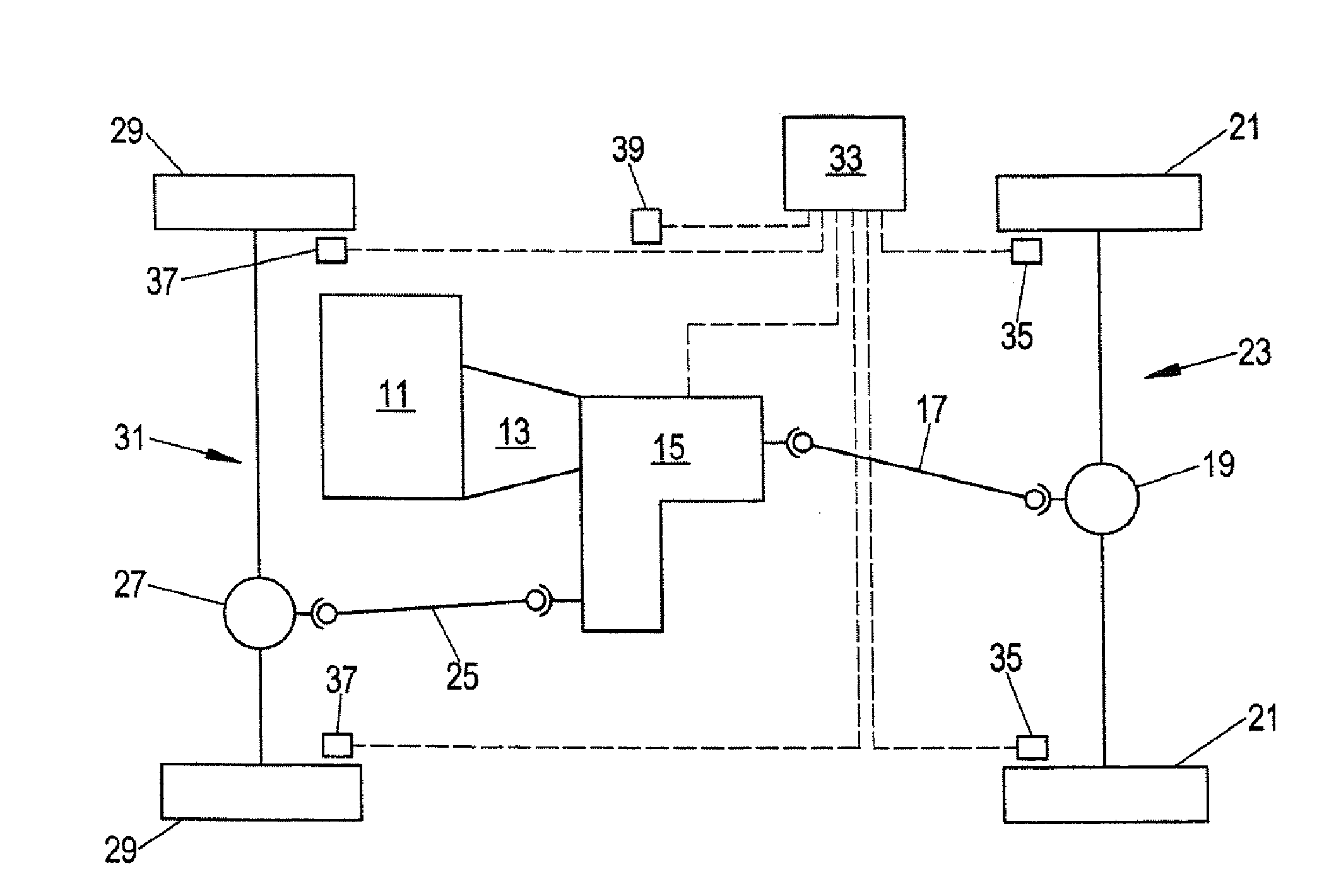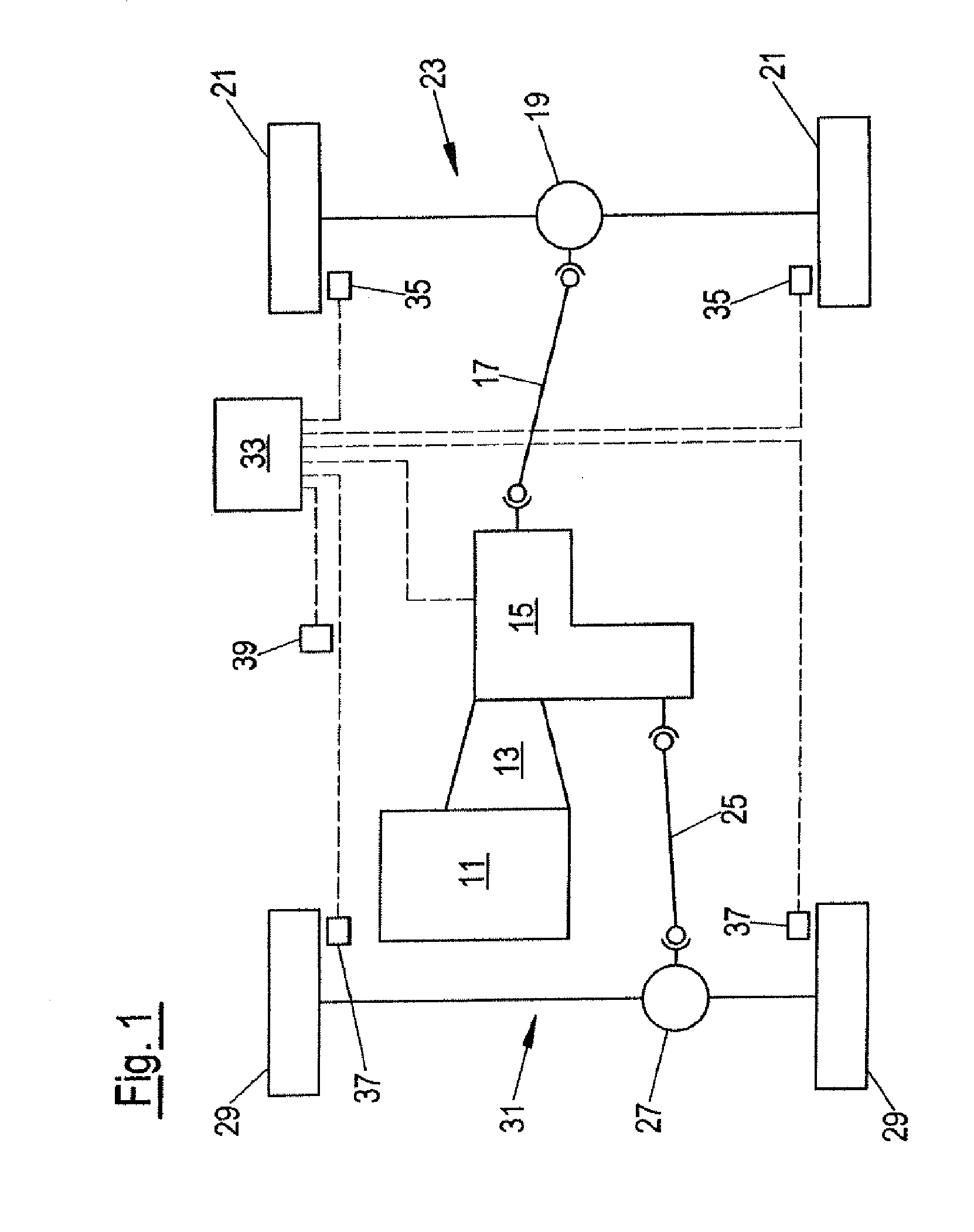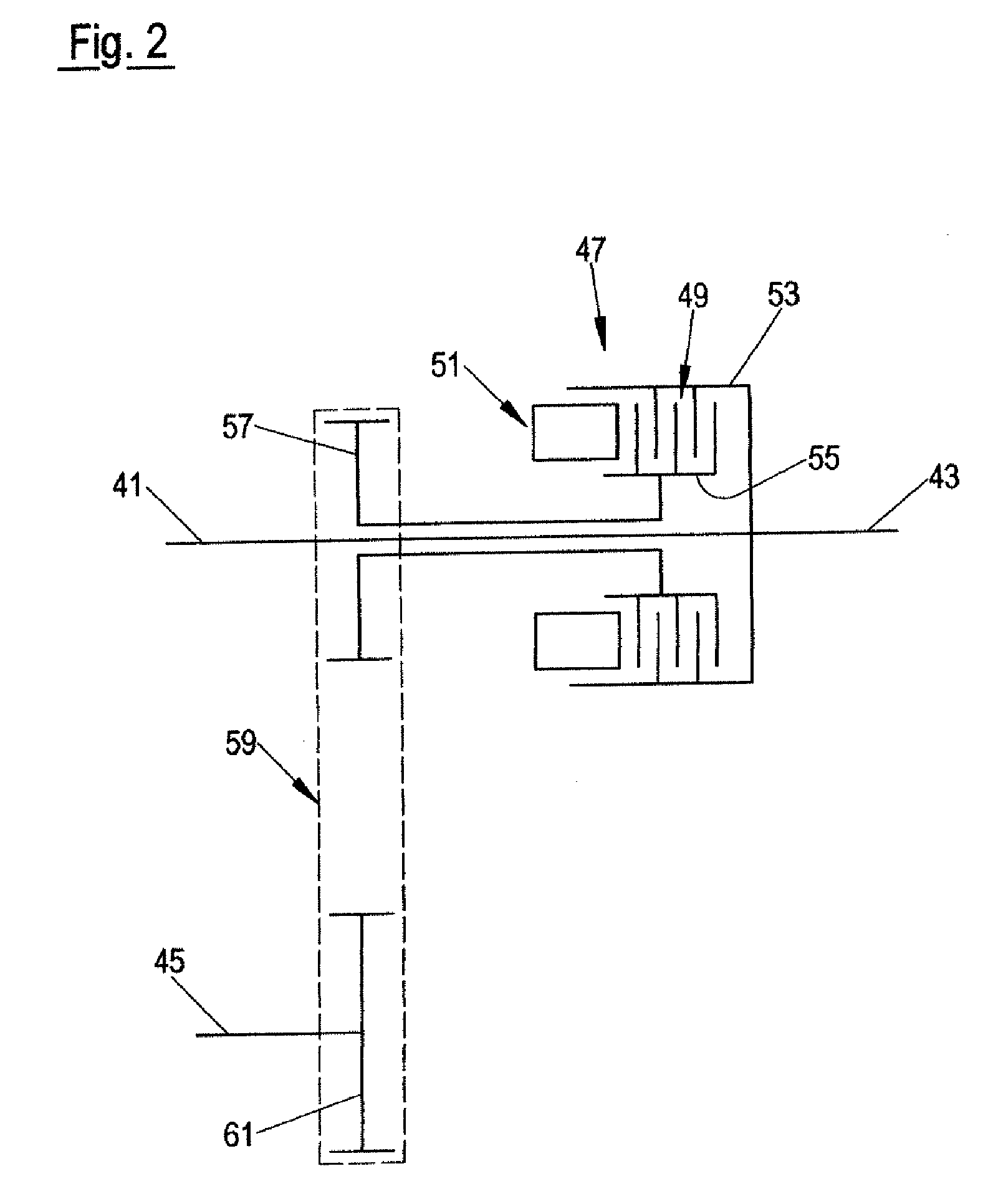Method for classifying a clutch unit
a technology of clutch unit and classifier, which is applied in the field of classifying a clutch unit, can solve the problems of large memory requirement, unfavorable adjustment of setting accuracy, damage to clutch components, etc., and achieve the effect of reducing the memory requirement, increasing the adaptation of the characteristic curve, and being easy to handl
- Summary
- Abstract
- Description
- Claims
- Application Information
AI Technical Summary
Benefits of technology
Problems solved by technology
Method used
Image
Examples
Embodiment Construction
[0034]FIG. 1 schematically shows a drivetrain of a motor vehicle having switchable all-wheel drive. The drive torque generated by an internal combustion engine 11 is supplied via a main transmission 13 (manual shift transmission or automatic transmission) to a transfer box 15. A first output of the transfer box 15 is coupled via a cardan shaft 17 to a rear axle differential gear 19. The wheels 21 of the rear axle 23 are permanently driven in this way. The rear axle 23 therefore forms the primary axle of the vehicle. A second output of the transfer box 15 is coupled via a cardan shaft 25 to a front axle differential gear 27. In this way, a part of the drive torque of the internal combustion engine 11 can selectively be transmitted to the wheels 29 of the front axle 31. The front axle 31 thus forms the secondary axle of the vehicle.
[0035]FIG. 1 also shows a driving dynamics regulating unit 33. The latter is connected to wheel rotational speed sensors 35, 37 which are assigned to the w...
PUM
 Login to View More
Login to View More Abstract
Description
Claims
Application Information
 Login to View More
Login to View More - R&D Engineer
- R&D Manager
- IP Professional
- Industry Leading Data Capabilities
- Powerful AI technology
- Patent DNA Extraction
Browse by: Latest US Patents, China's latest patents, Technical Efficacy Thesaurus, Application Domain, Technology Topic, Popular Technical Reports.
© 2024 PatSnap. All rights reserved.Legal|Privacy policy|Modern Slavery Act Transparency Statement|Sitemap|About US| Contact US: help@patsnap.com










